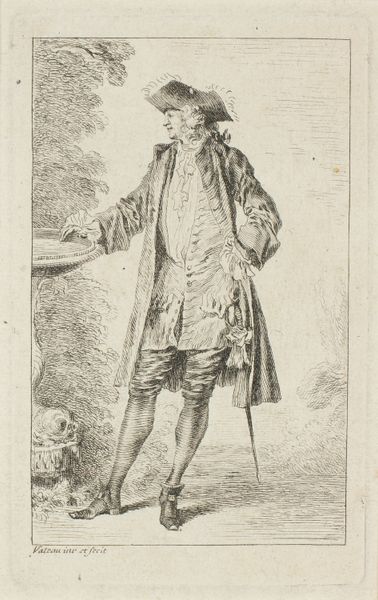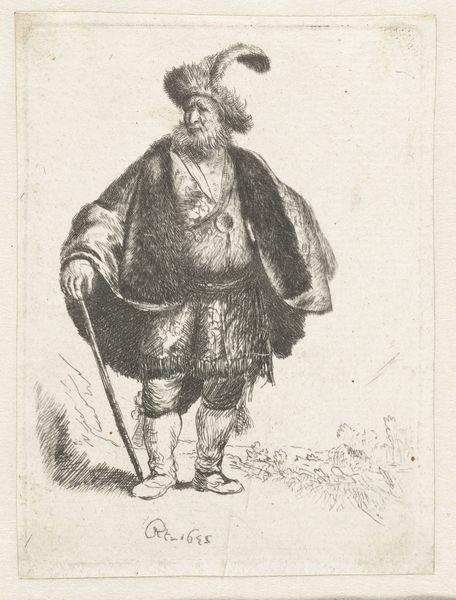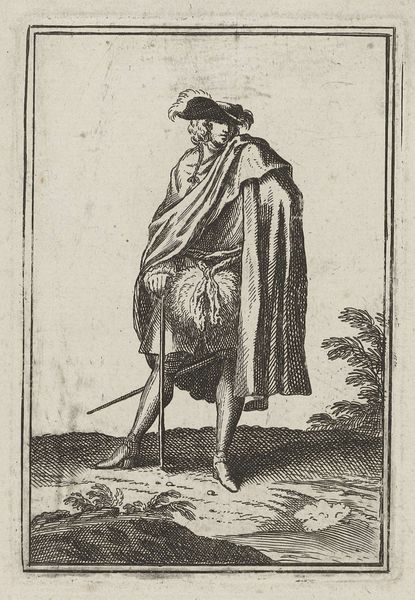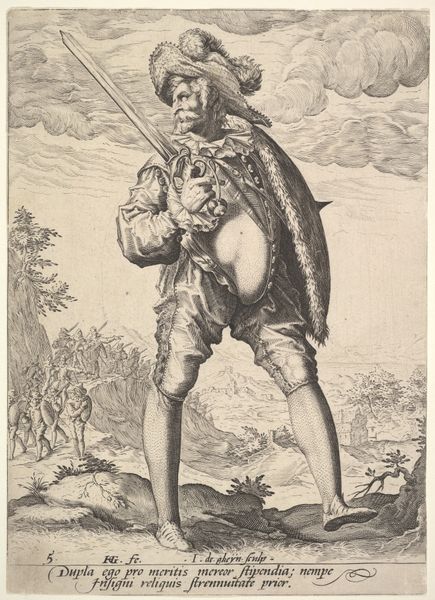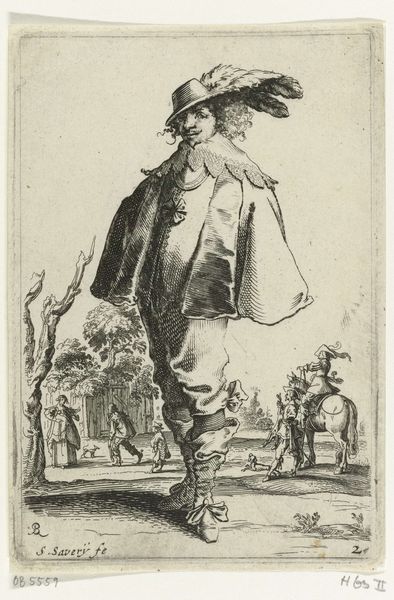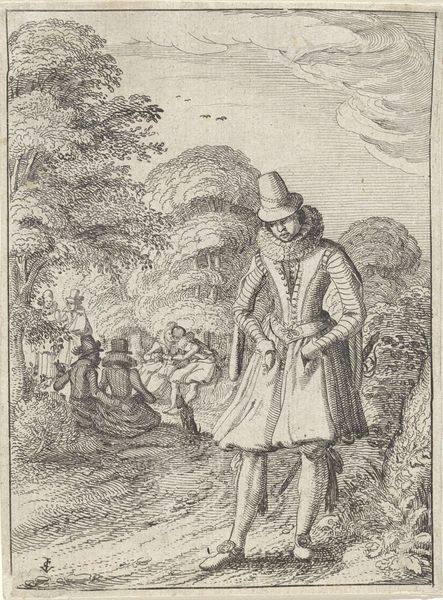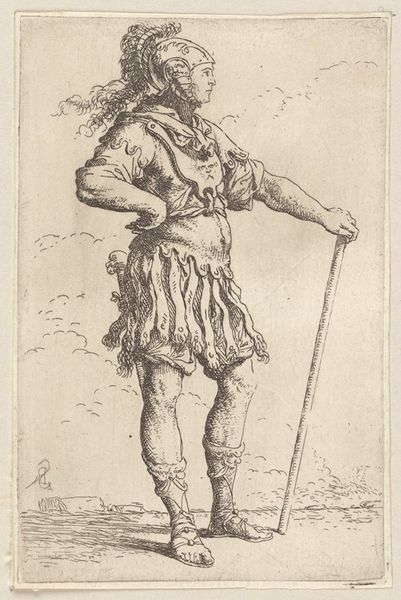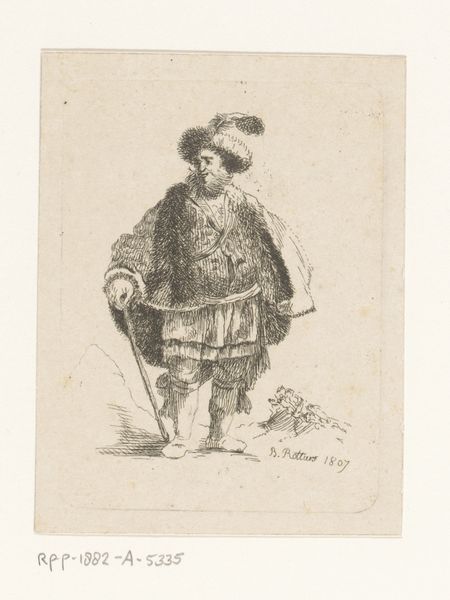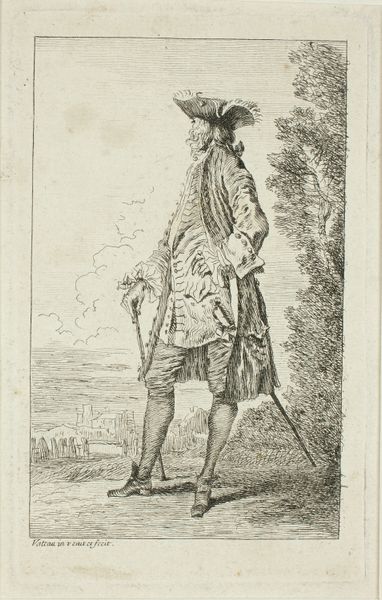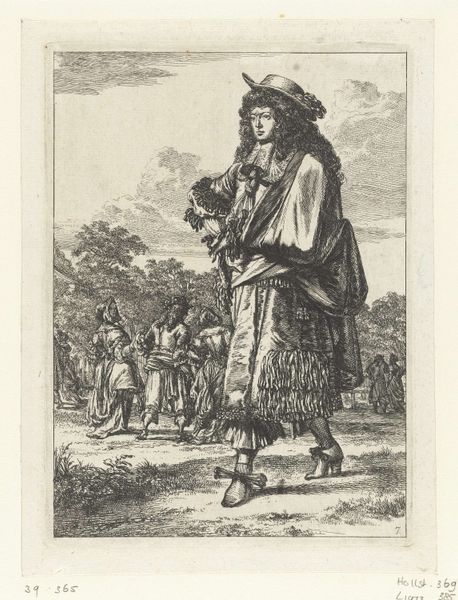
print, etching
#
baroque
# print
#
etching
#
old engraving style
#
figuration
#
genre-painting
#
history-painting
Dimensions: height 166 mm, width 123 mm
Copyright: Rijks Museum: Open Domain
Curator: What strikes me first about "Figures à la Mode," this etching by Romeyn de Hooghe, dated from 1670 to 1685, is the almost theatrical presence of that central figure. Editor: Absolutely, there's a real performative quality. The figure's exaggerated costume, that elaborate wig... It practically screams 'elite'. The gaze averted feels like an active choice of disinterest in those huddled figures on the left side. Curator: Yes, and the contrast is key. We have this flamboyant individual in the foreground, radiating confidence, while the figures in the background appear almost diminished, seeking perhaps compassion or aid. The composition stages a very particular social narrative. Editor: It's hard not to interpret this as a commentary on class and power. The print becomes a kind of document, freezing in time the vast disparity between those who flaunt privilege and those who are seemingly at their mercy. Is this meant as a criticism, or merely an observation? Curator: It’s ambiguous, and that's part of what makes it fascinating. De Hooghe was a master of detail, look at how precisely he renders the fabrics, the textures, and the atmospheric perspective. I wonder if this is less about blatant critique, and more about recording the social realities of the era. Editor: I disagree. The image of the fashionable figure feels almost satirical. We're meant to observe the stark difference and maybe even judge it. There’s that theatricality again – a performance of wealth happening quite literally on the backs of others. This etching could invite conversations around contemporary issues of social inequality. Curator: Perhaps. It serves as a potent symbol, holding up a mirror to persistent struggles around wealth and inequity that persist. We see, here, fashion operating not just as aesthetics but a political tool, the foregrounding figure displaying social status. Editor: I leave seeing in sharp relief the cost of privilege and beauty; it makes me consider all those still unseen, and the importance of lending my support. Curator: I’m struck by how the artist chose to arrange symbols of class, of course. We cannot help but project modern awareness onto such potent representations of power.
Comments
rijksmuseum about 2 years ago
⋮
From the middle of the 17th century fashionable men wore ‘rhinegraves’, extremely full breeches decorated with an ‘apron’ of braids under long fitted coats. The long curly hair, high-heeled shoes, large bands and profusion of buttons and bows amazed many contemporaries. The men in this series by De Hooghe almost seem to succumb to their garments.
Join the conversation
Join millions of artists and users on Artera today and experience the ultimate creative platform.

